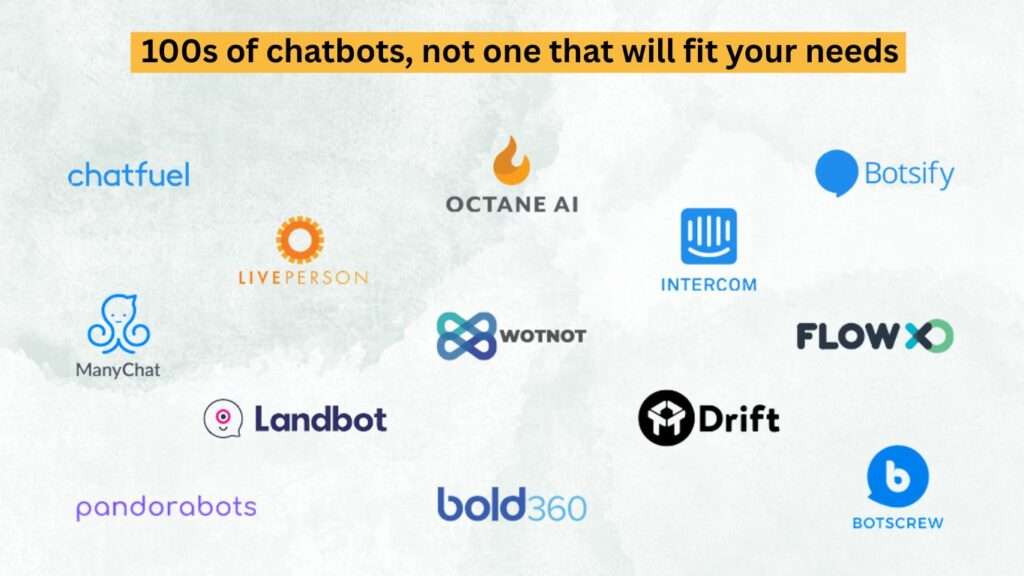
It’s midnight, and you’re scrolling through an online store, debating whether to buy that gadget you’ve been eyeing. Just as you’re about to close the tab, a friendly message pops up: “Hey there! Need help deciding?” It feels like you’re chatting with a real person, right?
That’s the magic of chatbots! They’ve come a long way from robotic, stilted replies to sounding like genuine conversationalists. But how do they do it? Let’s see how chatbots mimic human interaction and why they’re so good at it.
The Problem
We’ve all been through the agony of customer support—long wait times, repetitive questions, and unhelpful responses. It’s exhausting!
Now imagine if you could skip all that and get quick, friendly help anytime you needed it. That’s what businesses are aiming for with chatbots. They’re filling the gaps where traditional support systems fall short by offering instant, personalized conversations that actually feel… human.
The Solution: Chatbots That Feel Like People
Modern chatbots are no longer just programmed scripts—they’re powered by advanced tech like Artificial Intelligence (AI) and Natural Language Processing (NLP). These tools help bots not only understand what you’re saying but respond in ways that feel natural and relatable. Here’s how they pull it off:
1. Understanding Your Mood
When you vent to a chatbot—”I’m so annoyed right now!”—wouldn’t it be frustrating if the reply was just, “I don’t understand”?
Smart chatbots are built to detect the tone of your message. If you’re upset, they’ll respond with empathy.
For example:
- You: “I can’t log into my account, and I’ve tried everything!”
- Chatbot: “I’m so sorry you’re facing this. Let’s fix it together right away!”
Real-Life Example:
Spotify uses chatbots to address user queries with empathy. If someone says, “I can’t find my playlist, and it’s really frustrating,” the bot reassures them with personalized responses, reflecting concern and urgency to resolve the issue.
2. Small Talk Matters
Conversations aren’t just about solving problems—they’re about connection. Chatbots know this, which is why they’re programmed to handle casual banter.
Ask, “How’s the weather?” and the bot might reply with something quirky like, “I don’t go outside much, but I hear it’s sunny!”
Real-Life Example:
Duolingo’s chatbot adds humor and encouragement to make language learning less intimidating. This playful tone keeps users engaged and motivated.
3. Making It Personal
Don’t you love it when someone remembers your name or your preferences? Chatbots do, too! By analyzing past interactions, they tailor responses to make you feel valued.
For instance, an online store chatbot might say:
“Hi Alex! I noticed you’ve been checking out our sneakers. Need help finding your perfect pair?
Why This Works:
According to research, 80% of consumers are more likely to make a purchase when brands offer personalized experiences.
How It Works: The Tech Behind the Talk
Okay, so chatbots seem human—but how do they actually pull it off? Let’s break it down:
- Listening Like a Pro: Chatbots use NLP to “listen” to your words, understand context, and even catch typos or slang.
- Getting Smarter Every Day: Thanks to machine learning, chatbots learn from every interaction, improving their responses over time.
- Thinking Like a Human: AI algorithms help bots generate replies that mimic human speech, complete with natural phrasing.
- Going Beyond Words: Voice chatbots like Alexa and Siri use tone, pauses, and pacing to sound even more human.
What are the Benefits of Human-Like Chatbots?
1. Happier Customers, Happier Businesses
When a chatbot feels human, customers trust it more. They leave interactions feeling heard and understood.
Domino’s chatbot, Dom, helps customers order their favorite pizzas with casual, conversational language. The result? Faster orders and happier customers!
2. Saving Time and Money
Let’s face it—having humans handle every single query is expensive and time-consuming. Chatbots step in to handle repetitive tasks, leaving human agents free to deal with complex issues.
Chatbots can handle up to 80% of common customer questions, slashing response times and costs.
3. Keeping People Hooked
Engagement is key, and chatbots keep people on websites longer by being interactive and fun.
Sephora’s bot asks customers questions about their skin type, tone, and preferences. This interaction feels like chatting with a makeup artist, making the shopping experience both personal and enjoyable.
How to Get Started with Chatbots?
Feeling inspired? Here’s how you can start using chatbots for your business:
- Identify Your Needs: Is it customer support? Lead generation? Start by pinpointing where a chatbot can help the most.
- Choose the Right Bot: Look for one with strong NLP and AI capabilities.
- Keep Improving: Monitor performance, gather feedback, and keep tweaking the bot to make it even better.
Wrapping It Up
Chatbots aren’t just tools—they’re your digital team members, working tirelessly to create meaningful, human-like interactions. With the right blend of technology and personality, they can enhance customer satisfaction, boost engagement, and streamline operations.
If you’re looking for a chatbot solution that goes beyond just answering questions, Beyondchats is here to help. Our intelligent chatbots are designed to convert website visitors into high-quality leads while providing an unforgettable customer experience.
Ready to take your business to the next level with a chatbot that truly feels human? Visit Beyondchats today and see the difference for yourself! ????




